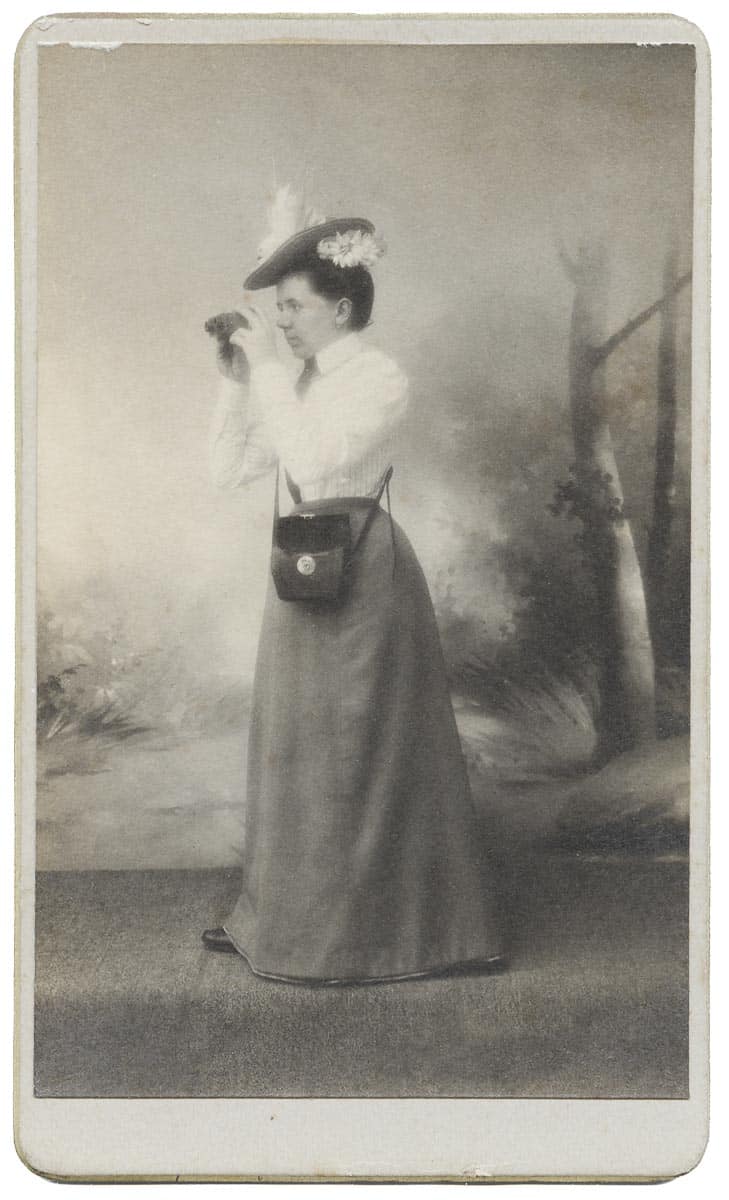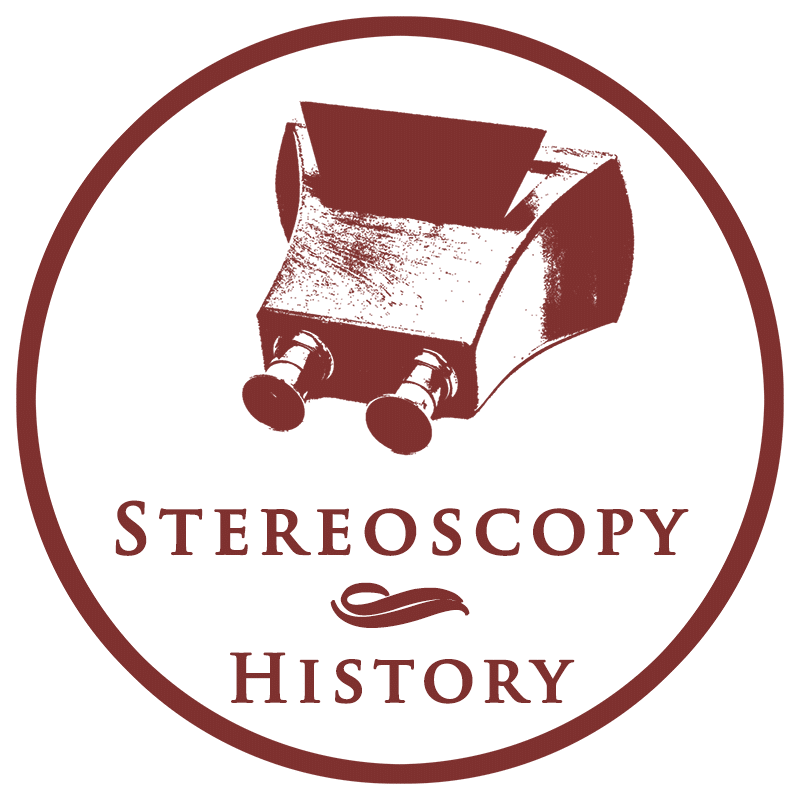
A 6 x 9.5 cm carte-de-visite that shows a woman with her Vérascope camera and the accompanying camera bag. It is a rare image, because photos of women with a camera were a rarity in an early 20th century society that was dominated by men.
A carte-de-visite consisted of a small portrait photograph that was printed on albumen paper. The print was pasted on a larger piece of cardboard. Carte-de-visites had the appearance of visiting or business cards, but they were used as affordable portrait photos that could be shared with family and friends. Carte-de-visites of celebrities were collectors’ items. The French photographer André Adolphe Eugéne Disdéri (1819–1889) filed the first carte-de-visite patent in 1854. His patent involved a system of capturing 10 photos on a single glass plate negative, which made the carte-de-visite affordable and easy to reproduce. The inexpensive reproduction of carte-de-visites in great quantities slowly faded the stereoscopy craze in the late 1850s, and boosted a new carte-de-visite craze. Disdéri became the victim of his own invention. His system was easy to imitate, and photographers all over the world started making carte-de-visites. Disdéri died as a poor man in a hospital in Paris.
Further read
- Carte de Visite. Via: en.wikipedia.org
